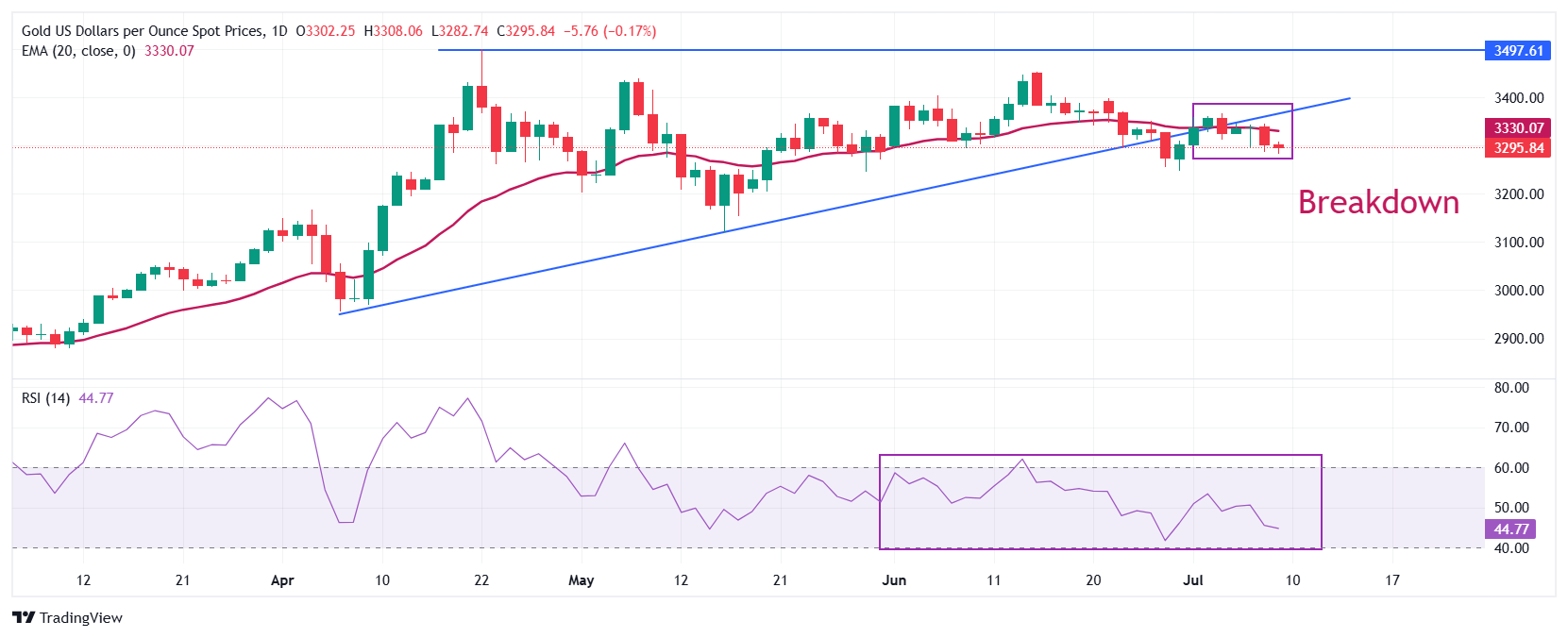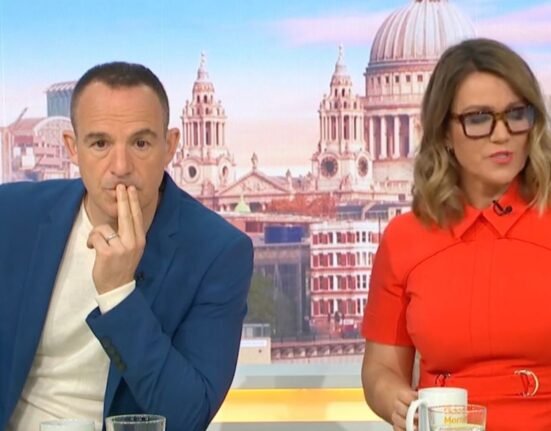- Gold price drops below $3,300 as investors start digesting global trade risk.
- Trump prepares to announce new tariff rates for over seven countries.
- Investors await the release of the FOMC minutes.
Gold price (XAU/USD) slips below the round-level support of $3,300 on Wednesday. The precious metal faces selling pressure ahead of the announcement of new reciprocal tariff rates for over seven countries by United States (US) President Donald Trump, which have failed to sign a trade pact during the 90-day pause period.
“We will be releasing a minimum of 7 Countries having to do with trade, tomorrow morning, with an additional number of Countries being released in the afternoon. Thank you for your attention to this matter!” Trump wrote.
Over the weekend, Trump announces new tariff rates for 14 nations, out of which Japan and South Korea were notable as they are leading trading partners of the US.
While the impact of new tariff rate list is expected to be limited as it will unlikely have names of any prominent trading partners. US President Trump has expressed that trade negotiations with China, Eurozone, and India are going smoothly.
Theoretically, heightened global economic tensions improve demand for safe-haven assets, such as Gold.
Meanwhile, firm US Dollar (USD) has also limited the Gold price’s upside. The US Dollar Index (DXY), which tracks the Greenback’s value against six major currencies, trades firmly near the weekly high around 97.80 posted on Tuesday.
Additionally, US President Trump has proposed 50% tariffs on copper and 200% on pharmaceuticals.
Going forward, investors will focus on the Federal Open Market Committee (FOMC) minutes for the June 17-18 policy meeting in which the Federal Reserve (Fed) left interest rates steady in the range of 4.25%-4.50%.
Gold technical analysis
Gold price breaks below the upward-sloping trendline of an Ascending Triangle formation on a daily timeframe, which is placed from the April 7 low of $2,957. The horizontal resistance of the above-mentioned chart pattern is plotted from the April 22 high around $3,500. Theoretically, a breakdown of the asset below the upward-sloping trendline results in a sharp downfall.
The precious metal trades below the 20-day Exponential Moving Average (EMA) around $3,334, suggesting that the near-term trend has turned bearish.
The 14-day Relative Strength Index (RSI) oscillates inside the 40.00-60.00 range, indicating a sideways trend.
Looking down, the Gold price would fall towards the round-level support of $3,200 and the May 15 low at $3,121, if it breaks below the May 29 low of $3,245
Alternatively, the Gold price will enter in an unchartered territory if it breaks above the psychological level of $3,500 decisively. Potential resistances would be $3,550 and $3,600.
Gold daily chart

Gold FAQs
Gold has played a key role in human’s history as it has been widely used as a store of value and medium of exchange. Currently, apart from its shine and usage for jewelry, the precious metal is widely seen as a safe-haven asset, meaning that it is considered a good investment during turbulent times. Gold is also widely seen as a hedge against inflation and against depreciating currencies as it doesn’t rely on any specific issuer or government.
Central banks are the biggest Gold holders. In their aim to support their currencies in turbulent times, central banks tend to diversify their reserves and buy Gold to improve the perceived strength of the economy and the currency. High Gold reserves can be a source of trust for a country’s solvency. Central banks added 1,136 tonnes of Gold worth around $70 billion to their reserves in 2022, according to data from the World Gold Council. This is the highest yearly purchase since records began. Central banks from emerging economies such as China, India and Turkey are quickly increasing their Gold reserves.
Gold has an inverse correlation with the US Dollar and US Treasuries, which are both major reserve and safe-haven assets. When the Dollar depreciates, Gold tends to rise, enabling investors and central banks to diversify their assets in turbulent times. Gold is also inversely correlated with risk assets. A rally in the stock market tends to weaken Gold price, while sell-offs in riskier markets tend to favor the precious metal.
The price can move due to a wide range of factors. Geopolitical instability or fears of a deep recession can quickly make Gold price escalate due to its safe-haven status. As a yield-less asset, Gold tends to rise with lower interest rates, while higher cost of money usually weighs down on the yellow metal. Still, most moves depend on how the US Dollar (USD) behaves as the asset is priced in dollars (XAU/USD). A strong Dollar tends to keep the price of Gold controlled, whereas a weaker Dollar is likely to push Gold prices up.







